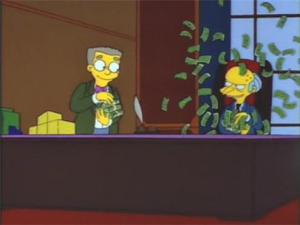Pros: Story based on real events; an attempt to show the life of different strata of society in Great Britain in the mid-19th century; high-quality costumes and scenery; very bright acting types; excellent English with many accents characteristic of different walks of life and regions Cons: Some alteration of the real story for the sake of drama; The incredibly sweet happy ending characteristic of Fellowes’s works. The English Game / “English Game”
Genre historical drama
Creator Julian Fellowes
Cast: Edward Holcroft (Arthur Kinnaird, 11th Lord Kinnaird), Kevin Guthrie (Fergus Sueter), Charlotte Hope (Alma Kinnaird), Niamh Walsh (Martha Almond), Craig Parkinson (James Walsh), James Harkness (Jimmy Love), Ben Butt (Cartwright), etc.
Netflix channel
Year of release 2020
Episode 6
Site IMDb
The English Game centers on the story of two real-life players, pioneers of English football. Aristocrat Arthur Kinnaird, 11th Lord Kinnaird, president of Barclays Bank (yes, the same one that still exists today) and future head of the Football Association of England (a post he held for 33 years). And the former Scottish bricklayer Fergus Suter, who is considered to be the first professional footballer.
The main conflict in The English Game is the confrontation between aristocratic teams, which actually determined the first rules of football, based on ball games, popular among students of elite schools and universities, and factory teams, created en masse in different cities of England. It is clear that the workers did not have the strength or means to train in the volumes that the aristocrats could afford, and team owners began to pay the best players and lure them from other teams. Which did not please the aristocrats at all, who believed that receiving money for playing football was unethical and contrary to the very essence of the game.





The key games featured in the series are the 1879 FA Cup semi-final, which pitted Northern England factory club Darwen against Old Etonians, a club formed in 1871 by Lord Kinnaird and an alumni club of the prestigious Eton. And also the FA Cup finals of 1882 (Old Etonians v Blackburn Rovers) and 1883 (Old Etonians v Blackburn Olympic), mixed into one match by the creators of the series.
By the way, the latter is perhaps the biggest problem of the series. In a story based on real events, you shouldn’t change the ending like that. Yes, we understand perfectly well that otherwise the authors of the series would not have been able to show the final confrontation between Kinnaird and Suter, old and new, but still Blackburn Rovers and Blackburn Olympic are different teams, and Suter played for the first one, which in reality lost to Old Etonians. It’s all the more disappointing that the story of Suter, who was, after all, a three-time FA Cup winner, is even more interesting than the one shown in the film. Two (not one, as shown in the series) replays in the semi-finals of 1879, a loss in the final of 1882 and victories in the finals of 1884, 1885 and 1886!





Julian Fellowes would not be Julian Fellowes if he had not added to football history his favorite theme of confrontation, mutual influence and interdependence of the upper and lower classes in Great Britain, the theme of relations between fathers and children in England in the 19th and early 20th centuries, and the problematic of attitudes towards mothers. singles in the UK. It is interesting that the last topic is raised in almost all English films and TV series in recent years; the British are unbearably ashamed of their actions towards such women, primarily due to the forced alienation of children born out of wedlock.
Besides, Fellows wouldn’t be Fellows if his series didn’t end with a complete, total, all-encompassing happy ending. Even those characters who seemed negative to you throughout the series (with the possible exception of one minor one) turned out to be not such bad people. And all the main characters found boundless happiness with the women they loved, continuing to do what they loved. Everything is so good that it sticks in your teeth. However, given these difficult times, perhaps these are the finals that are needed.




As is typical for British costume dramas, the set and costume designers are to be praised for their amazing work. The football uniform is especially good, by the way, very similar to the real one, which can be seen in the photos of members of the corresponding clubs. The series gets another plus for its casting. The creators found strikingly characterful actors, not only with very memorable appearances in the spirit of the 19th century, but also with striking accents characteristic of different social classes and different regions of Great Britain. This series is worth watching in its original language.




What will football fans see in The English Game? The first professional players; opening matches more reminiscent of rugby with kicks than football; sports uniforms of those times and the birth of the sportswear industry; first transfers and loan of players; the first advertising of football and around football; the first stadiums, which were cricket fields at that time; the first football “broadcasts”. And, of course, the first football functionaries. It’s incredibly interesting to see how it all began.
The English Game is a six-episode miniseries. This is a complete story that does not seem to require continuation. Although, who knows, if the show gets good reviews, the authors may continue. For example, talking about football at the beginning of the 20th century, about football during the First and Second World Wars, about the Football War between El Salvador and Honduras in 1969, and much more. Over the past 150 years, this game has generated a lot of interesting stories.
Conclusion:
A beautiful and interesting series about the development of football as a game for millions


